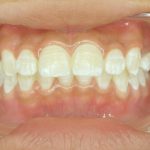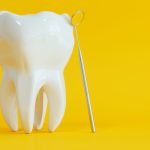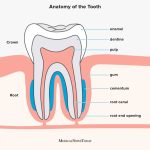Why Can I See Through My Teeth? Explaining Dental Transparency and its Causes
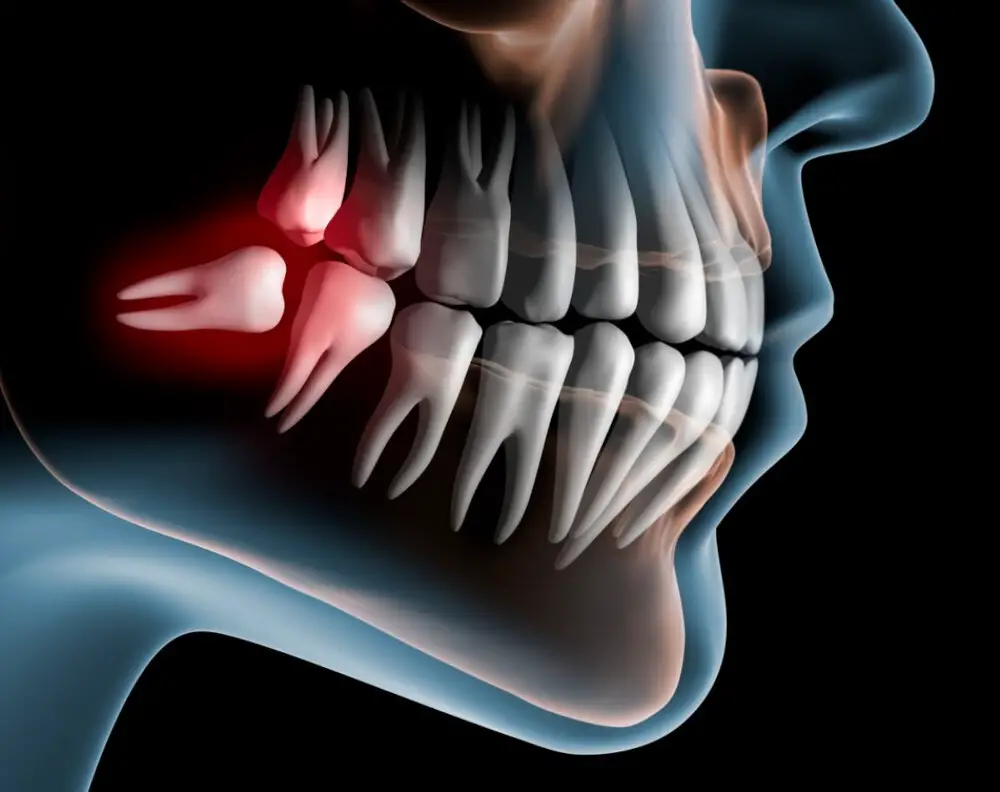
Dental transparency is a phenomenon that some people experience, where their teeth appear almost translucent or transparent. This can be a cause of concern and lead to self-consciousness about the appearance of one’s teeth. Understanding what causes dental transparency can help to alleviate these concerns and provide insight into the health of one’s teeth. There are several factors that contribute to dental transparency, including genetics, enamel erosion, and certain medical conditions. While dental transparency may not always be preventable, there are steps that can be taken to minimize its effects and maintain healthy teeth. In this article, we will delve deeper into the causes and treatments of dental transparency, as well as explore some common misconceptions surrounding this dental phenomenon.
Dental transparency is a phenomenon where the teeth appear translucent or transparent, allowing light to pass through them. It is caused by the thinning of the enamel layer, which is the hard, outermost layer of the tooth. This thinning can occur due to various reasons, including aging, genetics, and excessive grinding or erosion of the teeth. As the enamel layer thins, the underlying dentin layer becomes more visible, which is a naturally yellowish color. This can give the teeth a yellowish or grayish appearance, which can be a source of concern for some people. While dental transparency is not a serious health concern, it can affect a person’s self-esteem and confidence.
The article \Why Can I See Through My Teeth? Explaining Dental Transparency and its Causes\ explores the phenomenon of transparent teeth, which occurs when the enamel on teeth becomes thinner, allowing the underlying dentin to show through. This can result from a variety of factors, including aging, genetics, and dental erosion caused by acidic foods and drinks. The article also discusses how transparent teeth can affect a person’s dental health and appearance, as well as the different treatment options available to address this issue. Overall, the article provides a comprehensive overview of dental transparency and its causes, shedding light on a common dental concern for many people.
What Causes Dental Transparency?

Dental transparency is a condition where the teeth become translucent, making them appear see-through. While it’s not a severe oral health issue, it can affect the aesthetics of your smile and cause you to feel self-conscious. Dental transparency is caused by a variety of factors, including genetics, aging, and certain lifestyle habits. One of the main causes of dental transparency is thinning enamel. Enamel is the outermost layer of your teeth and is responsible for protecting them from damage and decay. As we age, our enamel naturally thins, and this can lead to dental transparency. Additionally, some people are genetically predisposed to thin enamel, making them more susceptible to this condition. Another contributing factor to dental transparency is lifestyle habits. Consuming acidic foods and beverages can erode your enamel over time, leading to transparency. Additionally, habits like teeth grinding or clenching can put pressure on your teeth, causing them to become thinner. Poor dental hygiene practices can also contribute to dental transparency. Failing to brush and floss regularly can lead to plaque buildup on your teeth, which can erode your enamel and cause transparency. If you’re experiencing dental transparency, it’s essential to speak with your dentist to determine the underlying cause and develop a treatment plan.
Enamel erosion and thinning are some of the most common causes of dental transparency. Enamel erosion occurs when the protective outer layer of the tooth, known as enamel, is gradually worn away. This can happen due to a variety of factors, including acidic foods and drinks, tooth grinding, and certain medications. As the enamel wears away, the underlying dentin layer of the tooth becomes more visible, leading to dental transparency. Thin enamel, on the other hand, can be caused by genetics or poor dental hygiene. When enamel is naturally thin, or has been worn down through aggressive brushing or acidic substances, it can also lead to dental transparency. It is important to address enamel erosion and thinning early on to prevent further damage to the teeth and maintain good dental health.
Genetics plays a crucial role in determining the natural tooth structure of an individual. The genes inherited from parents determine the shape, size, and color of teeth, as well as their transparency. Tooth transparency is caused by the enamel, which is the outermost layer of a tooth. Enamel is made up of tightly packed crystals that reflect light. In some cases, a person’s enamel may be thinner or more translucent due to genetics, making their teeth appear more transparent. Additionally, certain lifestyle factors, such as smoking or excessive consumption of acidic foods and beverages, can also contribute to tooth transparency. Understanding the underlying causes of dental transparency can help individuals take better care of their teeth and maintain their oral health.
As we age, our bodies undergo a natural process of wear and tear that affects all of our organs, including our teeth. The enamel, which is the hard, protective outer layer of our teeth, can become thinner and more transparent over time due to a variety of factors such as diet, genetics, and oral hygiene habits. This can lead to a condition known as dental transparency, where the teeth appear more translucent and allow light to pass through them. While dental transparency is generally harmless, it can be a sign of underlying dental issues or a lack of proper oral care. Regular dental check-ups and maintaining good oral hygiene habits can help prevent further damage and maintain the health and appearance of our teeth as we age.
While dental transparency can be caused by a variety of factors, an acidic diet and poor lifestyle habits can play a significant role. Consuming too many acidic foods and drinks, such as citrus fruits, soda, and sports drinks, can erode the enamel on teeth, leading to transparency. Additionally, habits such as smoking, drug use, and excessive alcohol consumption can also contribute to dental transparency by weakening and damaging tooth enamel. Maintaining a healthy diet and avoiding harmful habits can help protect tooth enamel and prevent dental transparency.
How is Dental Transparency Diagnosed?

When it comes to diagnosing dental transparency, a dentist will typically perform a thorough examination of the patient’s teeth. This may involve the use of x-rays or other imaging techniques to get a closer look at the teeth and identify any underlying issues that may be causing the transparency. In some cases, a dentist may also perform a dental cleaning to remove any buildup of plaque or other substances that could be contributing to the transparency. In addition to a physical examination, a dentist may also ask the patient about their dental history and any symptoms they may be experiencing. This can help to identify any potential causes of dental transparency, such as a history of tooth decay or trauma to the teeth. The dentist may also ask about the patient’s oral hygiene habits and provide recommendations for improving their dental health. Overall, a thorough diagnosis of dental transparency can help to identify the underlying causes of the condition and ensure that appropriate treatment is provided.
Visual examination is an essential diagnostic tool used by dentists to identify dental problems. When it comes to dental transparency, a visual examination can reveal the extent of the transparency and its causes. During a visual examination, the dentist will examine the teeth for any signs of decay, erosion, or cracks that can contribute to dental transparency. The dentist will also assess the thickness of the enamel, as thin enamel is a common cause of transparency. The dentist may also take x-rays to get a more detailed view of the teeth. Overall, visual examination is a crucial step in assessing dental transparency and developing an appropriate treatment plan.
X-rays are a fundamental tool in dental imaging, allowing for the visualization of structures within the mouth that are not visible to the naked eye. These images are created by exposing a patient’s mouth to a controlled dose of radiation, which is absorbed differently by the various structures in the mouth. This absorption pattern allows for the creation of detailed images of the teeth, bones, and soft tissues of the mouth. In the case of dental transparency, X-rays can help identify the cause of this phenomenon, such as thinning enamel or a lack of dentin. By using X-rays and other imaging techniques, dental professionals can diagnose and treat a wide range of oral health issues, from cavities and gum disease to more complex conditions like impacted teeth and jaw tumors.
Microscopic analysis plays a crucial role in understanding dental transparency and its causes. Teeth are complex structures composed of different layers, including enamel, dentin, and pulp. Through microscopic analysis, researchers can examine the composition and structure of each layer, as well as the presence of any defects or anomalies that may affect transparency. Advanced imaging techniques, such as scanning electron microscopy and confocal laser scanning microscopy, enable scientists to observe dental tissues at a high resolution and in three dimensions. By analyzing the microstructure of teeth, researchers can gain valuable insights into the mechanisms behind dental transparency, which can inform the development of new treatments and preventive measures for dental diseases.
Is Dental Transparency Harmful?
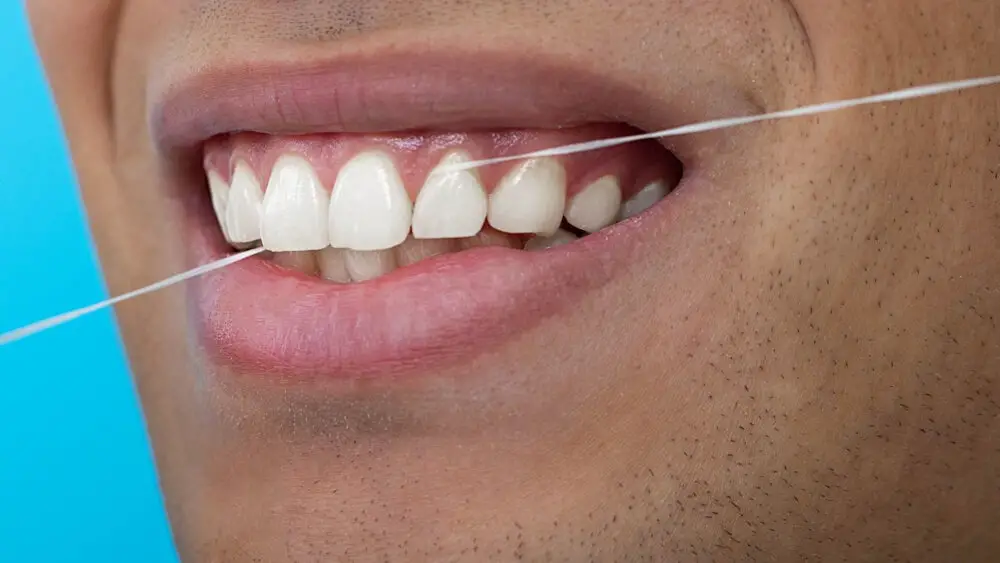
Dental transparency, also referred to as translucency, is a common dental condition where the teeth appear to be see-through or transparent. This condition is caused by the thinning of the enamel layer, which is the outermost layer of the teeth. Enamel is responsible for protecting the teeth from damage and wear, and as it thins, it becomes more translucent. While dental transparency is not harmful in itself, it can be a sign of underlying dental issues that require attention. For instance, when the enamel thins, the teeth become more susceptible to cavities, sensitivity, and discoloration. Therefore, it is essential to consult a dentist if you notice any dental transparency or related symptoms. On the other hand, some people may find dental transparency aesthetically pleasing, especially when it occurs on the tips of the front teeth. This is because the transparent effect gives the teeth a unique, natural look that is sometimes desirable. However, it is worth noting that dental transparency can also be a sign of aging or damage to the teeth. Therefore, it is essential to consult a dentist to determine the cause of dental transparency, especially if it is accompanied by other dental symptoms. Ultimately, dental transparency is not harmful, but it can be a sign of underlying dental issues that require attention.
While dental transparency may be a cosmetic concern for some, it can also indicate potential dental health risks. Teeth that appear transparent may be thinning due to enamel erosion, which can be caused by acidic foods and drinks, dry mouth, certain medications, and teeth grinding. Enamel erosion can lead to tooth sensitivity, discoloration, and an increased risk of tooth decay and cavities. Additionally, transparent teeth may be a sign of aging or genetic factors that affect the thickness and structure of the enamel. It is important to address any concerns about dental transparency with a dentist to prevent further damage and maintain overall oral health.
Cosmetic concerns are one of the major reasons why people opt for dental treatments to improve the appearance of their teeth. Dental transparency is a condition where the teeth become translucent and allow light to pass through them, making them look almost see-through. This condition can be caused by a number of factors, including enamel erosion, aging, and genetics. While dental transparency doesn’t usually cause any pain or discomfort, it can make people feel self-conscious about their smile. Dental treatments like bonding, veneers, and crowns can help to improve the appearance of teeth affected by transparency, giving people the confidence to smile freely.
Treatment options for dental transparency depend on the underlying cause. If the transparency is caused by enamel erosion, the dentist may recommend bonding or veneers to cover the affected teeth. However, if the transparency is due to genetics or aging, the dentist may suggest teeth whitening or other cosmetic treatments to improve the appearance of the teeth. Additionally, if the transparency is caused by a more serious dental issue, such as decay or gum disease, the dentist will need to address and treat that issue before addressing the transparency. It is important to consult with a dental professional to determine the best course of treatment for dental transparency.
Treatment Options for Dental Transparency
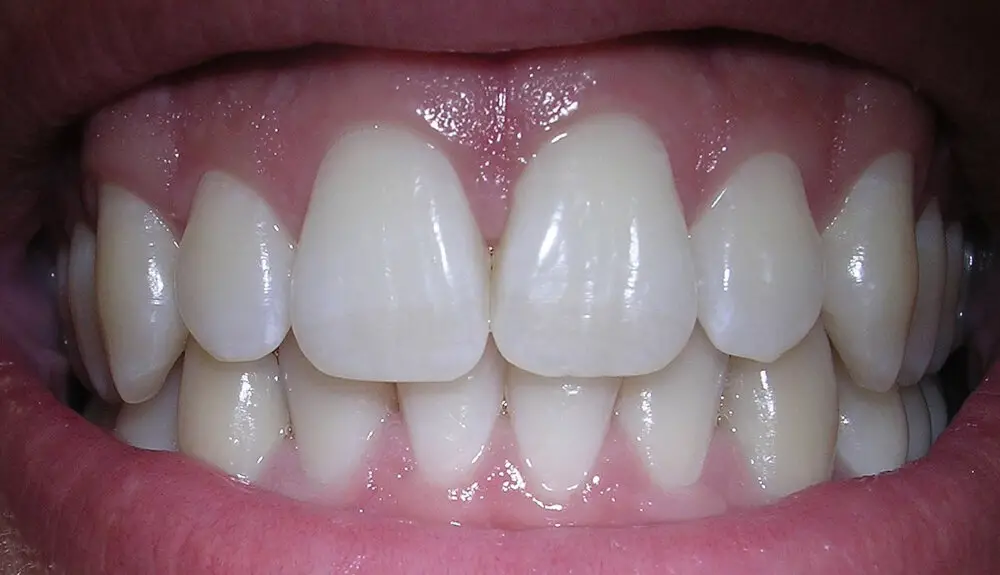
When it comes to dental transparency, there are a few treatment options available to those who wish to address this issue. The first and most straightforward option is to undergo teeth whitening treatments. This may be done in-office or at home with a kit. Teeth whitening can help to remove surface stains and discoloration, which can improve the overall appearance of the teeth. However, it may not be enough to completely address the issue of dental transparency. Another treatment option for dental transparency is dental bonding. This involves the application of a tooth-colored resin to the surface of the tooth. The resin is then shaped and polished to match the natural contours of the tooth. Dental bonding can help to improve the appearance of teeth that are chipped, cracked, or discolored. It can also be used to fill in gaps between teeth or to correct the size or shape of teeth. While dental bonding is a relatively simple and affordable treatment, it may not be suitable for all cases of dental transparency.
Dental bonding is a cosmetic dental procedure that involves the application of a tooth-colored resin material to the surface of a tooth. The resin is shaped and polished to match the natural appearance of the tooth, resulting in an improved aesthetic appearance. Dental bonding is often used to repair chipped or cracked teeth, as well as to fill in gaps between teeth. It is a relatively simple and painless procedure that can be completed in a single visit to the dentist. Dental bonding is a popular choice among patients who want to improve the appearance of their teeth without undergoing more invasive procedures such as dental implants or crowns.
Veneers are a popular cosmetic dental treatment used to improve the appearance of teeth affected by dental transparency. These thin shells, typically made of porcelain or composite resin, are custom-made to fit over the front surface of a tooth. They can be used to cover up discolored, chipped, or misshapen teeth, as well as to close gaps between teeth. Veneers are designed to match the color and shape of the surrounding teeth, creating a natural and seamless look. They are a minimally invasive procedure that can transform the appearance of a smile in just a few visits to the dentist. Veneers are a long-lasting and durable solution that can improve both the function and aesthetics of teeth affected by dental transparency.
Crowns, also known as dental caps, are a common dental restoration used to cover and protect a damaged or weakened tooth. They are typically made of porcelain or ceramic and are custom-made to match the color and shape of the existing teeth. Crowns are a versatile and long-lasting solution for a variety of dental issues, such as fillings that are too large, cracked or chipped teeth, or teeth that have undergone root canal therapy. They can also be used for cosmetic purposes, such as improving the appearance of misshapen or discolored teeth. Crowns are a popular choice for patients seeking a durable and natural-looking restoration that can improve both the function and aesthetics of their smile.
Teeth whitening is a popular cosmetic dental treatment that involves removing stains and discoloration from teeth to improve their appearance. This can be achieved through a variety of methods, including in-office treatments, take-home kits, and over-the-counter products. While teeth whitening can be effective at removing surface stains, it may not be effective at treating dental transparency, which is when teeth appear see-through or translucent. Dental transparency can be caused by a variety of factors, including thinning enamel, genetics, and aging. In some cases, dental transparency can be a sign of more serious dental issues, such as enamel erosion or tooth decay, and should be evaluated by a dental professional.
Dental transparency is a phenomenon in which teeth appear translucent or transparent due to the loss of enamel and dentin, the two outermost layers of teeth. The causes of dental transparency can be attributed to various factors, including genetics, age, and diet. Genetics play a significant role in determining the thickness and quality of dental enamel, with some individuals being more prone to dental transparency than others. As individuals age, their teeth naturally become more transparent due to wear and tear on the enamel. Additionally, a diet high in acidic foods and drinks, such as citrus fruits and soda, can erode dental enamel and contribute to dental transparency. Understanding the causes of dental transparency can help individuals take preventative measures to maintain the health and appearance of their teeth.
Dental health is of paramount importance as it not only affects our oral hygiene but also our overall health. Regular dental checkups can help detect and prevent dental transparency, a condition where teeth appear translucent or see-through. This condition can be caused by a lack of enamel, acid erosion, genetics, or aging. Ignoring regular dental checkups can lead to further damage, including decay, cavities, and gum disease, which can affect our ability to eat, speak, and smile confidently. By prioritizing dental health and regular checkups, we can maintain healthy teeth and gums, prevent dental transparency, and avoid more severe oral health problems.
In conclusion, dental transparency can occur for various reasons, including genetics, aging, and excessive consumption of acidic foods or drinks. It is essential to maintain good oral hygiene habits, such as regular brushing and flossing, to prevent tooth decay and erosion. Visiting a dentist regularly can help identify any underlying dental issues that may be contributing to dental transparency. If you are experiencing dental transparency, it is recommended to seek professional dental care to determine the cause and appropriate treatment options. Ultimately, taking care of your teeth and seeking professional help when necessary can help maintain a healthy and beautiful smile for years to come.
Conclusion

In conclusion, dental transparency or the ability to see through teeth is usually caused by the loss of enamel, which is the protective layer that covers teeth. This loss of enamel can be due to various factors such as genetics, aging, and consumption of acidic foods and beverages. While dental transparency may not always be a cause for concern, it can lead to sensitivity and other dental problems if left untreated. Maintaining good oral hygiene and avoiding acidic foods and drinks can help prevent further enamel loss and preserve the health and appearance of your teeth.
